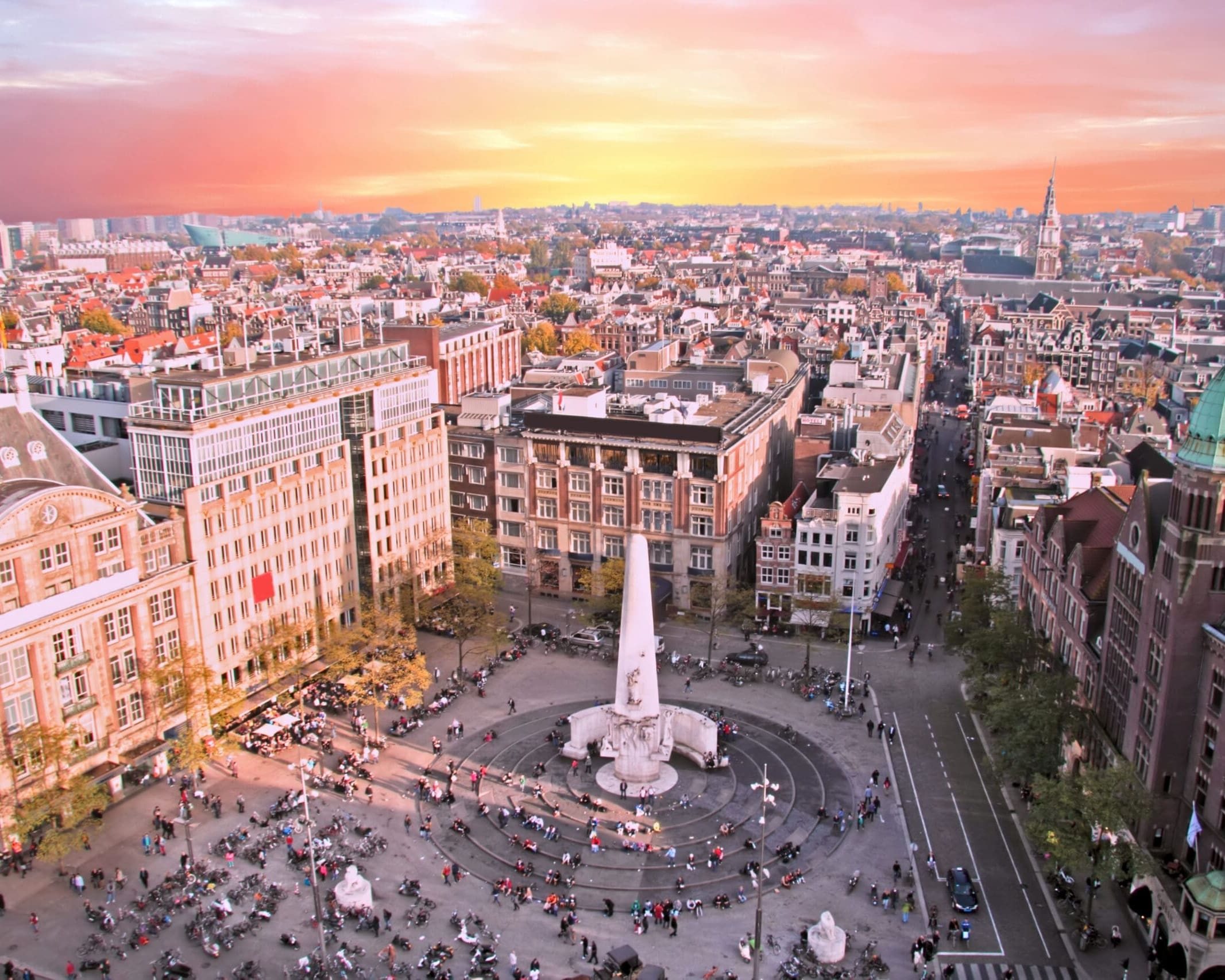Welcome to Amsterdam, a city where history and culture meet a vibrant, modern lifestyle.
This is the place where every turn along the canal streets tells a story, where art is not just in the museums but in the very soul of the city. Whether you’re here to explore the rich tapestry of the Van Gogh Museum, take in the poignant history at the Anne Frank House, or simply enjoy a leisurely bike ride through the bustling Vondelpark, Amsterdam offers an unparalleled experience for every traveler.
Dive into the local scene with a visit to one of the city’s iconic brown cafes, savor a hearty Dutch meal, or shop the latest trends in the Nine Streets district. From the tulip blooms in spring to the cozy lights in winter, every season brings a new reason to love Amsterdam.
So pack your curiosity and a good pair of walking shoes, because adventure awaits in every corner of this unforgettable city.

The Best Time To Visit
The best time to visit Amsterdam varies by season:
- Spring (March to May) is ideal for tulip season and enjoying mild weather along with vibrant festivals like King’s Day.
- Summer (June to August) is warm and lively, perfect for outdoor activities and cultural events, but also the busiest season.
- Autumn (September to November) offers fewer crowds and picturesque fall scenery, great for museum visits.
- Winter (December to February) is cold but festive, with Christmas markets and a cozy atmosphere, and fewer tourists.
Choose spring or summer for the full lively experience, or autumn and winter for a quieter, culturally rich visit
What To Know
In Amsterdam, Dutch is the official language spoken. However, the city is very international and English is widely spoken, especially in tourist areas, restaurants, shops, and hotels.
This makes it easy for English-speaking visitors to navigate the city and communicate without any major language barriers.
Additionally, due to its diverse population, you might also hear other languages such as Arabic, Turkish, and various languages from Suriname.
The currency used in Amsterdam is the Euro, which is the common currency used across the Netherlands and many other European Union countries.
This makes it convenient for travelers moving between EU destinations.
Amsterdam is generally considered a safe city for tourists and residents alike. Like any major city, it has areas that are busier and more crowded, where you should be vigilant about personal belongings due to pickpockets, especially in tourist-heavy spots like the Red Light District and around major attractions.
However, violent crime rates are low, and the city is well-equipped with a reliable and visible police presence. Public transport is safe to use at all hours, and the city’s layout and lighting make it conducive to walking around safely even at night. As always, it’s wise to follow common travel safety tips such as keeping an eye on your possessions and staying aware of your surroundings.
Public transport in Amsterdam is renowned for its efficiency and coverage, making it extremely convenient for getting around the city. The network includes trams, buses, and a metro system that connect all major areas of the city and beyond. Trams are the most popular way to travel within the city center, offering extensive routes that cover most tourist destinations and residential areas.
For journeys outside the central city or to nearby towns, the train service from Amsterdam Central Station is excellent. Additionally, ferries across the IJ river are free and connect to the northern parts of Amsterdam.
Travelers can use an OV-chipkaart, an electronic payment card, for seamless access to all forms of public transport. Single tickets are also available, but for multiple journeys, day passes offer unlimited travel and can be more economical. Biking is also highly popular, with well-designed bike paths and bike rentals available throughout the city.
Amsterdam Travel Guides
April 10, 2024
20 Epic Things To Do In Amsterdam
June 28, 2023
